The 30: Giants take over first in final first-half MLB power rankings
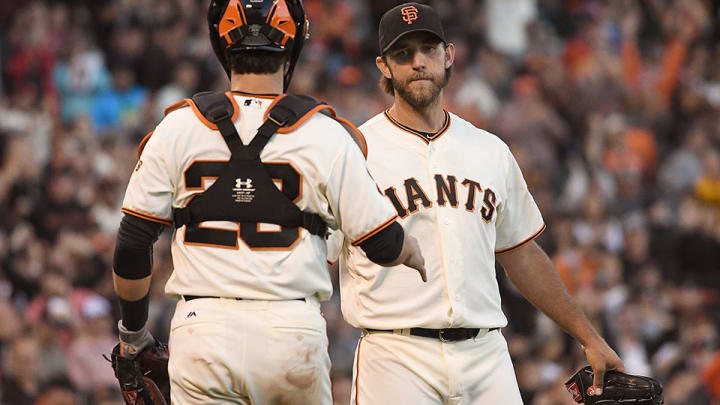
This week, the baseball world descends on San Diego for three days for the 2016 All-Star Game. Highlighting the festivities is a fun exhibition game that stupidly decides home-field advantage in the World Series, because former commissioner Bud Selig was made to look ridiculous, and a man in his position can’t afford to be made to look ridiculous.
To celebrate the Midsummer Classic, the rebuilding Padres lead off this week’s column, and keeping with West Coast solidarity, the Friars’ NL West rivals in Los Angeles, San Francisco and Colorado also get the state-of-the-franchise treatment. (Our apologies to the Diamondbacks, who were just featured two weeks ago. Know that we love you, too, and that Jake Lamb is both a worthy All-Star and an excellent source for barnyard animal-related memes.)
Go west, young readers. It’s Week 14 of The 30.
Best Base Running Derring-Do: Billy Hamilton
Billy Hamilton has always been blazingly fast. In his first full season of minor league ball, he swiped 103 bases; in his second, he stole 155 (!). Though his big league numbers haven’t been as prolific, they’ve still been huge relative to his peers: 56 stolen bases in his rookie year, then another 57 in his sophomore season, with plenty of additional incredible feats once he gets on base. The problem has always been one of opportunity: When you’re getting on base less than 30% of the time, it’s tough to wreak havoc on the base paths.
On Tuesday against the Cubs, Hamilton reached base four times in five trips to the plate. What came next was a joy to behold.
In the first inning, Hamilton drew a one-out walk, then quickly stole second. When Cubs catcher David Ross let a John Lackey pitch scoot between his legs, Hamilton came all the way around from second to score. That was merely the most audacious of Hamilton’s many exploits in a game that saw him steal three bases.
The look on Lackey’s perpetually angry face after the lack of hustle and awareness by both him and Ross that enabled Hamilton’s dash home was priceless. It was also a reminder of why Hamilton continues to get his name penciled into the lineup despite poor on-base skills and a total lack of power: When it gets the chance, speed kills.
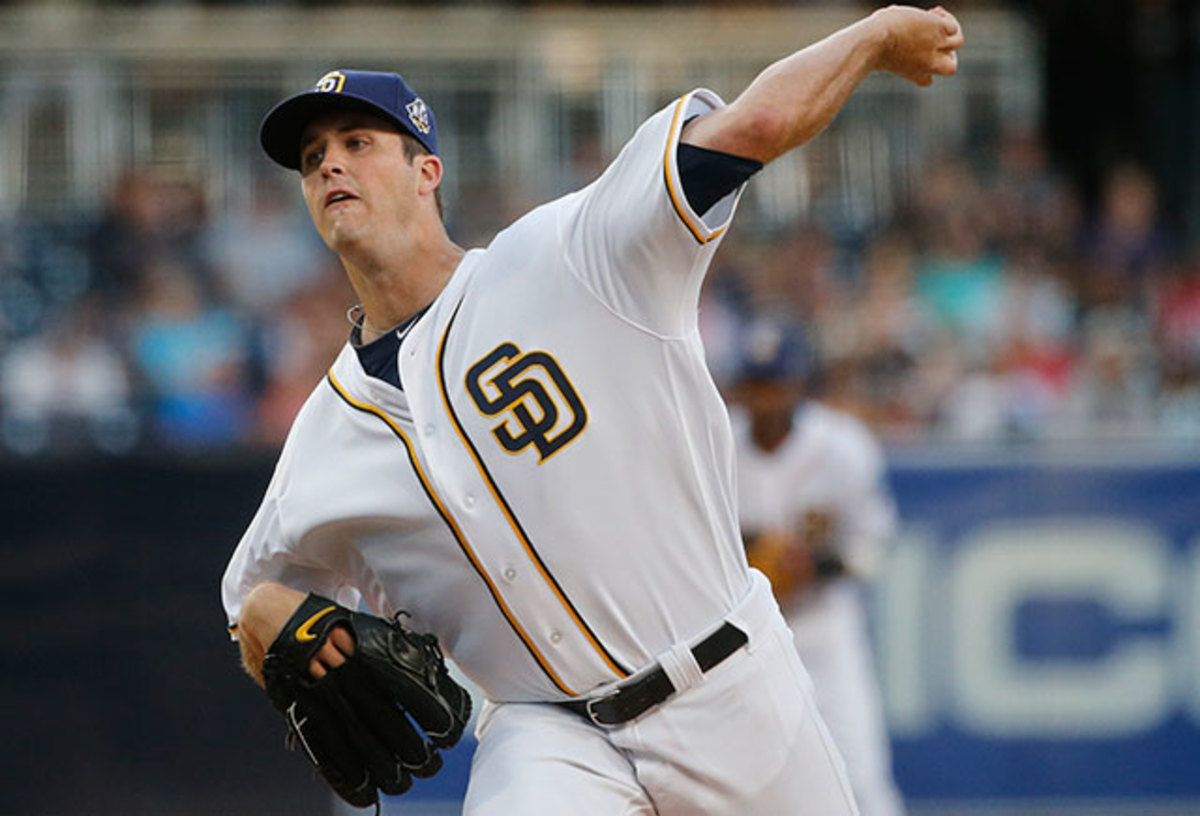
2020 And Beyond
The Padres are betting hard on the future.
30. Cincinnati Reds (32–57 record, minus-154 run differential, last week: 30)
29. Atlanta Braves (31–58, minus-107, LW: 28)
28. Tampa Bay Rays (34–54, minus-74, LW: 27)
27. Minnesota Twins (32–56, minus-71, LW: 29)
26. Oakland A’s (38–51, minus-69, LW: 25)
25. Los Angeles Angels (37–52, minus-20, LW: 26)
24. Milwaukee Brewers (38–49, minus-76, LW: 23)
23. Arizona Diamondbacks (38–52, minus-54, LW: 21)
22. San Diego Padres (38–51, minus-48, LW: 22)
San Diego’s grand experiment to load up on righthanded power and high-priced talent failed quickly and spectacularly, but credit the Padres for now taking decisive action in the other direction. Few teams in recent memory have pivoted this hard from one organization-building strategy to another.
San Diego’s aggressive shift starts with the avalanche of talent brought in via the international market and amateur draft this year. MLB’s attempts to rein in international spending have largely failed, instead creating a scenario in which teams pick one specific year in which they like the talent pool a lot, then blow way past their budget and sign as many top prospects as possible, figuring they’ll live with penalties later. The Padres are the biggest transgressors this year, by a mile.
On Wednesday, MLB declared 17-year-old Cuban lefthander Adrian Morejon a free agent; the Padres locked him up the very next day, striking an $11 million deal. This came just a few days after the Friars inked 10 other international prospects on the July 2 signing day, led by Dominican shortstop Luis Almanzar for $4 million. The Padres’ total international budget for this signing period was just $3.3 million. Having obliterated that target, the team is now paying a 100% premium on any and all signings, meaning San Diego has spent about $60 million in signing bonuses and penalties. Meanwhile, the Padres also had six of the top 85 picks in this year’s amateur draft, spending roughly $13 million for those six players.
• Which prospects stood out at this year's All-Star Futures Game?
Most of these new prospects are teenagers, meaning they won’t crack the big leagues until next decade, if they ever do. But as Los Angeles Times columnist Bill Shaikin reported in his interview with Padres owner Peter Seidler, that timeline is intentional, with the Padres hoping to build the kind of sustainable winner they’ve never really had thanks to years of weak drafts and other problems. When the Padres hired A.J. Preller in 2014 to be their new general manager, they acquired a young executive who’d served as head of pro and international scouting for the Rangers, helping Texas build one of baseball’s most dynamic farm systems. Switching to a long-view approach in San Diego intersects far more neatly with Preller’s background and core skill set, and it’s a logical strategy for one of the league’s lowest-revenue teams.
Taking stock of the major league roster becomes the next step. The Padres have already dumped James Shields’s contract on the White Sox and flipped Fernando Rodney to the Marlins for pitching prospect Chris Paddack. With the timeline focused on years down the road, San Diego has reportedly shopped nearly everyone on the big league roster. Some, like 2016 breakout Drew Pomeranz, could fetch a ton in return, given his combination of youth (he’s 27), performance (he ranks fourth in the National League with a 2.47 ERA) and controllable service time (he can’t test the free-agent market until after the 2019 season). Others, like Pomeranz’s rotation mate Andrew Cashner, will bring back far less, given his spotty performance, the fact that he’s still owed about $3.5 million of his 2016 salary and that he’s a free agent at season’s end.
Then there’s Matt Kemp, who’s owed $21.75 million a year through 2019. At age 31 and with the sixth-worst on-base percentage in the NL, he won’t go anywhere unless the Friars cover tens of millions of dollars to make him go away. The flip side of Kemp is Wil Myers, who’s finally having the breakout year everyone expected since the Royals flipped him and others to Tampa Bay for Shields and Wade Davis and is now seen as the team’s foundational player.
The most intriguing name to watch, however, might be Melvin Upton. Long considered an albatross as he scuffled his way through a five-year, $75 million megadeal, Upton’s numbers have ticked sharply higher this season. The market for his services might depend on who’s buying: Upton is on pace to top 30 homers and swipe nearly 40 bases this year, but he also sports a mediocre .311 OBP, making him a useful player but still something less than a star. Still, given that he’s owed more than $24 million between now and the end of his contract next season, finding a buyer hungry for speed and power would seem a logical priority.
The good news for prospective Upton buyers? We now have a full calendar year of results telling us that he’s back—if not necessarily as a star, then at least as a productive hitter. For a team committed to turning present contributors into assets for the future, that’s encouraging news.
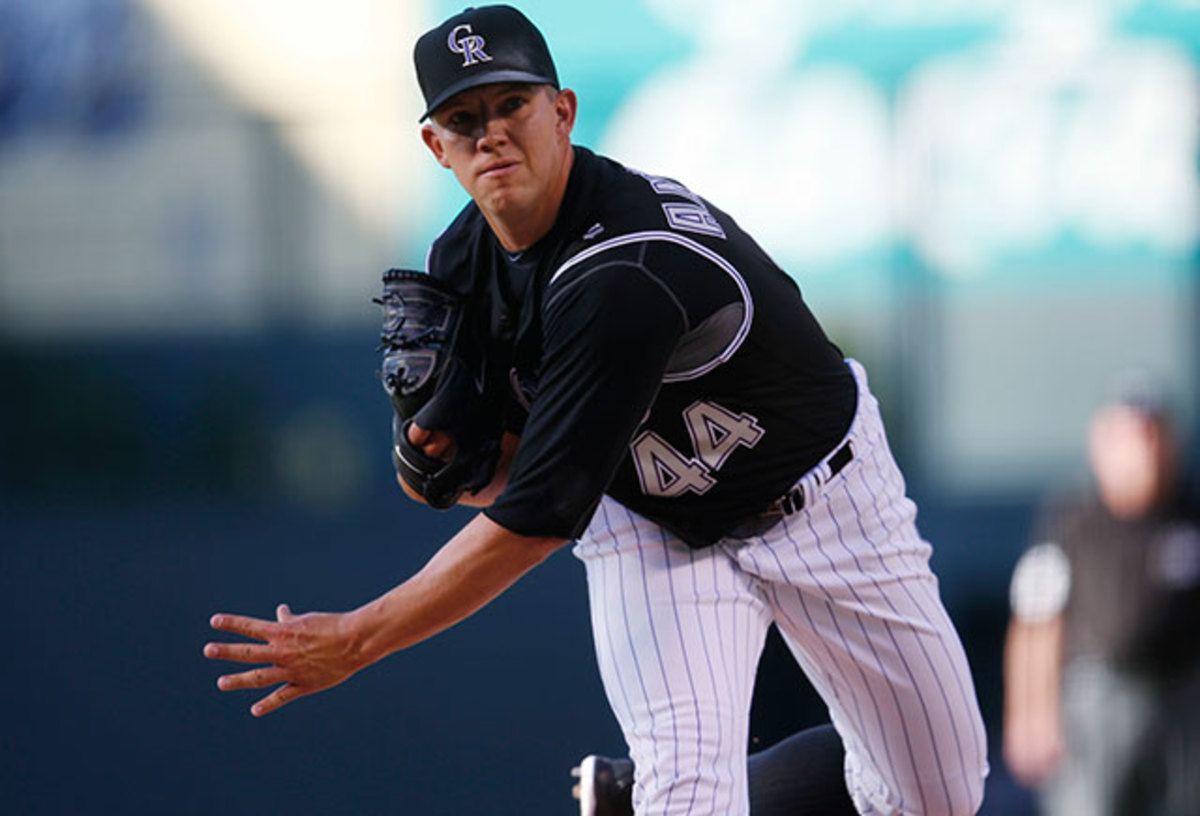
The Kids Are Alright
Trevor Story is getting the ink, but it’s another rookie who might help solve the Rockies’ enduring weakness.
21. Philadelphia Phillies (42–48, minus-87, LW: 24)
20. Colorado Rockies (40–48, minus-14, LW: 20)
19. New York Yankees (44–44, minus-34, LW: 19)
18. Kansas City Royals (45–43, minus-26, LW: 16)
17. Chicago White Sox (45–43, minus-12, LW: 17)
16. Pittsburgh Pirates (46–43, plus-7, LW: 18)
15. Seattle Mariners (45–44, plus-51, LW: 13)
To no one’s surprise, Coors Field this season has been both the most offense-friendly ballpark in the majors and the NL’s most conducive park to home runs. When a ball flies over the wall, it’s rarely considered a big deal. That changed on Saturday night, when rookie Tyler Anderson launched his first major league homer.
What made the moment special was that Anderson is a pitcher. What made it even better was that Anderson also pitched well, earning his first major league victory. What really sealed the deal was this: Anderson’s first six major league starts have given him good standing in what’s become one of the most surprising young rotations in baseball, which is something you never expect to hear when talking about the Rockies.
Granted, you do have to do a little digging to better understand how Rockies starters have fared this season. Of the five current arms in the rotation, three—Jorge de la Rosa (6.42), Chad Bettis (5.65), and Jon Gray (4.67)—look iffy to awful by raw, unadjusted ERA. But this is Coors Field, where homers are just the start of pitchers’ problems: When breaking balls don’t break and hitters can take aim at the largest outfield in the game, a cavalcade of singles, doubles and triples await, too.
• Picking eight players for the inaugural All-Pitcher Home Run Derby
Luckily, we have numbers that attempt to adjust for park factors, as well as defensive support and other factors largely or entirely out of a pitcher’s control. Thanks to some solid peripheral stats that include more than a strikeout per inning, Gray actually rates as 11% better than the league-average starter by park-adjusted, fielding-independent pitching. Bettis, who strikes out far fewer batters but rates as the second-stingiest member of the rotation by walk rate, checks in at 7% better than average.
But it’s Tylers Anderson and Chatwood who’ve fared best so far this year for a rotation that manager Walt Weiss has called the best he’s had in his 3 1/2 years skippering the Rockies. A recent DL stint notwithstanding, Chatwood has been the MVP of the staff: In nine starts at Coors Field this season, he has fired five or more innings and allowed one earned run or fewer in eight of them, defraying much of his Coors Field woes. Meanwhile, Anderson’s first six starts show hints of the perfect repertoire needed to thrive at mile-high altitude. In 35 2/3 innings pitched, he’s fanned 32 batters, allowed just five unintentional walks and, most impressively, flashed a sky-high 59.8% ground-ball rate—the third-highest in the majors for any starter with as many innings pitched.
For Gray, Bettis, Chatwood, and Anderson, 2016 represents their first crack at big league ball, their longest stretch of solid performance in the Show or both, which means we have to take these encouraging signs with a grain of salt. A 3–9 end to the first half might have scuttled any faint dreams of playoff contention this year, too.
When people do a post-mortem on the 2016 Rockies, it’ll probably be rookie Trevor Story and his 30 million homers that get most of the ink. But with Chatwood controllable through 2017 (and possibly re-signable), Bettis through ‘20, Gray through ‘21 and Anderson through ‘22, the foundation of young pitching the Rockies have craved throughout the franchise’s existence might finally have arrived.
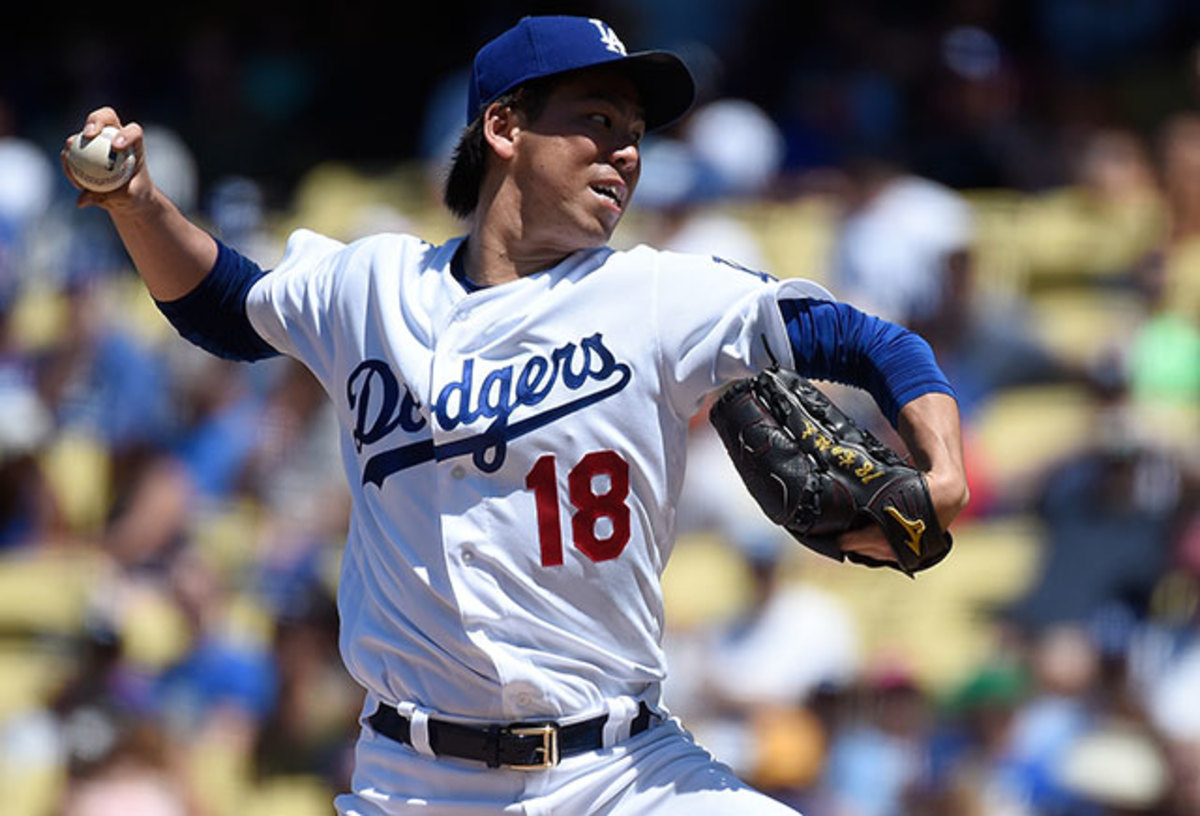
The Replacements
Even with the best pitcher in the world out, the Dodgers' pitching staff has been humming lately.
14. Detroit Tigers (46–43, minus-1, LW: 14)
13. New York Mets (47–41, plus-20, LW: 12)
12. Miami Marlins (47–41, plus-1, LW: 15)
11. St. Louis Cardinals (46–42, plus-89, LW: 10)
10. Houston Astros (48–41, plus-30, LW: 11)
9. Los Angeles Dodgers (51–40, plus-53, LW: 7)
Clayton Kershaw’s last start, back on June 26, was as un-Kershaw as you can get. Facing the Pirates, the Dodgers’ ace lasted just six innings, marking only the second time all season he’d left a game that early. He allowed four runs, just the second time he’d given up more than two earned runs in a game all season. Worst of all, Kershaw landed on the DL with a herniated disc in his back, only the second time in his entire illustrious career that that’s happened. With the Dodgers dealing with a raft of pitching injuries this season along with several disappointing offensive performances, you had to wonder if losing the league leader in innings pitched, ERA, strikeouts and walk rate might severely hurt the team’s playoff chances, even with three months to go in the season. And in predictable fashion, the Dodgers followed that terrible blow by … going 10–4 to close out the first half?
Much of the credit for that run goes to the Dodgers’ bullpen, which has racked up more innings than any other team’s pen in that span and posted a 1.83 ERA. But several members of the sans-Kershaw starting five deserve a good chunk of credit in their own right.
The huzzahs start with Brandon McCarthy. The veteran righthander lasted just four starts last season before heading under the knife for Tommy John surgery. It’s often said that when pitchers return after TJ, their velocity can be at or close to normal levels, but with shaky command. Instead, McCarthy absolutely dominated in his first start back with five shutout innings against the Rockies, allowing two hits and one walk, punching out eight and tossing 49 of his 72 pitches (68%) for strikes. His second start (against the Padres) didn’t go quite as smoothly, but it was still good enough for another Dodgers win: five innings, three hits, three runs, three walks and six strikeouts. Look for manager Dave Roberts to give McCarthy a bit of a longer leash as the season wears on, allowing him to go into the sixth, seventh and eighth innings as performances warrant. If he keeps pitching this well, that could happen quite often.
• What's next for Matt Harvey, Mets after season-ending shoulder surgery?
Another welcome addition has been Bud Norris, whose trajectory looks almost identical to McCarthy’s. A trade pickup from Atlanta on June 30, Norris struck out eight, walked one and allowed just two hits over six innings in his first start this season for the Dodgers. Like McCarthy, Norris also put up fair numbers in his second start, allowing three runs on six hits over five innings, good enough to help the Dodgers get to extra innings (they eventually lost in 14 to the Orioles). His strong start in L.A. continued some impressive recent showings—the one home run he allowed against the O’s on July 6 was the first long ball he’d surrendered in seven starts and the first he’d given up in any role since April 27. Meanwhile, his last six starts have featured the kind of command and dominance he’s rarely shown in his career: 40 strikeouts and seven walks in 35 1/3 innings. Read Jeff Sullivan’s excellent piece on the journeyman righty and you can see why he’s suddenly improved: Norris has started throwing a lot more cutters, and it’s working, with more whiffs, fewer walks and homers and a spike in harmless ground balls.
But the one constant in the Dodgers’ rotation (other than Kershaw) has been Kenta Maeda. The Japanese rookie was at the top of his game Sunday, chucking seven innings of one-run, two-hit ball at the Padres and fanning 13 batters without a single walk. Maeda’s slider was devastating, inducing swinging strikes 11 out of 33 times. That offering forms the foundation of a five-pitch repertoire that allows him to succeed despite a fastball that hovers in the low-90s: Maeda throws his slider about one-third of the time, and opponents are batting a measly .181 against that pitch this season. Luckily for the Dodgers, Yasiel Puig and company now have that slider on their side, instead of having to wave helplessly at it.
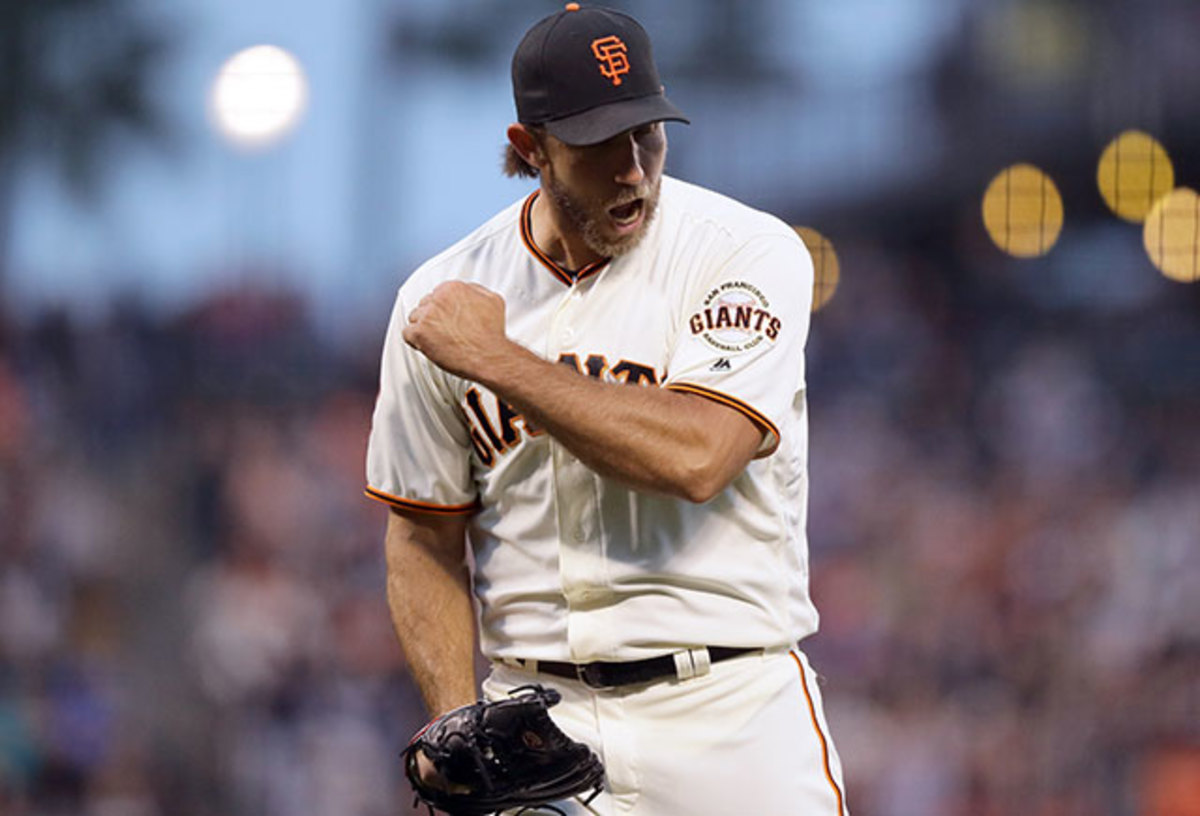
Ace(s) Wild
Madison Bumgarner heads a throwback rotation with two Cy Young candidates in it.
8. Boston Red Sox (49–38, plus-66, LW: 8)
7. Baltimore Orioles (51–36, plus-41, LW: 6)
6. Texas Rangers (54–36, plus-16, LW: 4)
5. Toronto Blue Jays (51–40, plus-75, LW: 9)
4. Cleveland Indians (52–36, plus-81, LW: 5)
3. Chicago Cubs (53–35, plus-139, LW: 1)
2. Washington Nationals (54–36, plus-105, LW: 2)
1. San Francisco Giants (57–33, plus-73, LW: 3)
He has made five All-Star teams and won two Silver Sluggers. He has won three rings, an NLCS MVP award and a World Series MVP award, and his performance in the 2014 Fall Classic ranks as one of the best in baseball history. At age 26, he has already achieved more than most pitchers could hope to accomplish in five lifetimes. Heading into Sunday night’s game against the Diamondbacks, though, Madison Bumgarner had one major feat missing from his resume: Though he’d come close a handful of times, he’d never thrown a no-hitter.
He just missed—again. Bumgarner shut out the Diamondbacks, 4–0, on Sunday, needing 117 pitches to get through nine spectacular innings and striking out a career-high 14 batters. But when it came to taking his place among such Giants immortals as Chris Heston and Jonathan Sanchez, Bumgarner fell just short, done in by a Jake Lamb single with one out in the eighth. That one shortfall aside, Bumgarner can now head into the second half aiming for another elusive honor: a Cy Young award.
That’s a hell of a tough award to win of course, especially in the NL. Since Bumgarner’s first full big league season in 2011, Clayton Kershaw has won three of the past five NL Cy Young awards (coming in second and third in the two years he didn’t win). But Kershaw’s back injury and uncertain return date has opened the door for one of the deepest and most impressive group of candidates in recent history. Noah Syndergaard, Jose Fernandez, Stephen Strasburg and the “off-year” version of Jake Arrieta all sit within striking distance of Cy Young honors, assuming Kershaw sits for a while longer.
• Awards Watch: Picking midseason MVP, Cy Young, ROY leaders
Bumgarner might have as good a shot at it as anyone in the post-Kershaw group. He’s working on career bests in ERA (2.09) and strikeout rate (27.9%) and is on pace to top last year’s career high of 217 1/3 innings to boot. The secret to Bumgarner’s even more impressive results this year? He is another adopter of the cutter. The Giants’ ace went to that pitch frequently in the first three years of his career, then scaled back thereafter. This year, he’s firing it on about one-quarter of his offerings, holding opponents to a .193 batting average against the pitch. As with all of his pitches, Bumgarner disguises the cutter well, using his across-the-body motion to hide it until the last possible moment.
Ironically, Bumgarner’s biggest obstacle in the chase for top pitcher honors might end up being his teammate, Johnny Cueto. The veteran righthander has thrown more innings, induced more ground balls and allowed fewer home runs and walks than Bumgarner has this season. The presence of Cueto on the roster, plus that of Jeff Samardzija and even Matt Cain, stems from the Giants’ willingness to adopt an old-school approach to roster building. While many teams try to build super bullpens in the mode of the defending World Series champion Royals, the Giants have gone the other way, spending $220 million on Cueto and Samardzija over the winter and slotting them in with Cain, the $127.5 million man, as well as Bumgarner, who would be paid a fortune himself if San Francisco hadn’t shrewdly locked him up on one of the most team-friendly deals in the majors four years ago. Throw in a resurgent Jake Peavy, and the Giants have the kind of horses that teams of yore would ride for the 162-game grind, then send into battle come October, leaving little opportunity for opponents to expose the team’s weaker middle relief corps.
That’s not to say the Giants do nothing but break your will by having their starters toss seven, eight or nine stingy innings a night at you. This is also the NL’s third-best offensive team by advanced, park-adjusted metrics. Using a formula that’s worked well for them throughout their even-year run of World Series wins, the Giants have also played great defense, leading the NL in Defensive Runs Saved. Still, at a time when many teams are trying to win by acquiring arguably the most unreliable class of players in relief pitchers, San Francisco is paying top dollar for the far rarer commodity that is front-line starting pitching. With the Giants taking over the top spot in The 30 for the first time in 2016, it’s fair to say their approach is working.
